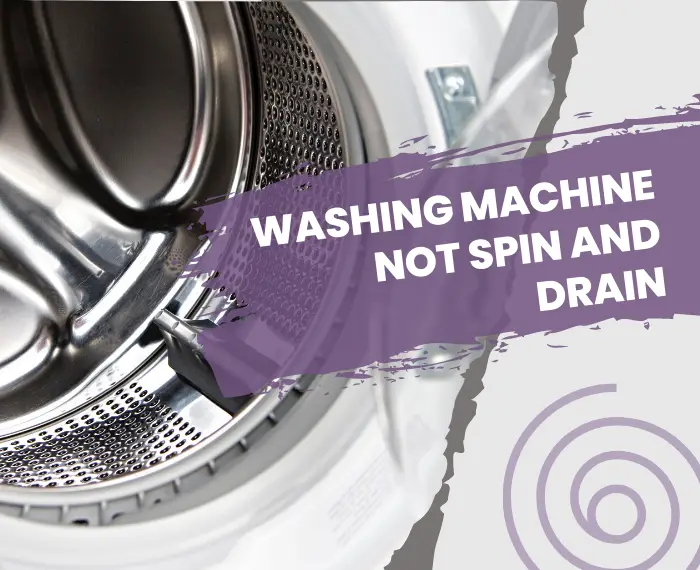Does your washing machine often not agitate? There are different mechanisms used in washing machines to wash clothes. One of such mechanisms is the agitation of clothes. A plastic, circular, and structured center-part called the agitator is present mainly in top-load washing machines. It agitates clothes during the wash cycle. Any washing machine that can agitate has a better cleaning performance than those that don’t come with an agitator.
Sometimes, your washing machine may not agitate and still spin and drain, then the cleaning quality of the clothes will be affected. The agitator makes sure that your clothes are all clean and stain-free. If you face such a problem, there will be something that needs to be repaired or replaced. It will not be valid if we make the agitator solely responsible for the agitation, as many other structures are also involved.
Whenever a problem arises, you first need to know the cause, to solve the problem. There can be a lot of reasons that can lead to your washing machine not being able to agitate. To know the cause, you have to assess the device. Once you see the issue, fixing it will only need some guidance or assistance. Don’t know how to identify these causes and how to fix them? You don’t need to worry. In this article, I have some of the main reasons that can lead to your washing machine not being able to agitate and simple methods to fix them.
1. Worn Agitator Components
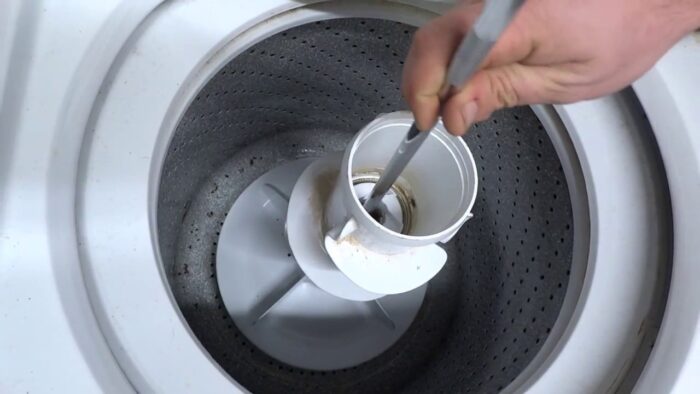
An agitator is the part of the washing machine, which is mainly responsible for the agitation of clothes. So, when your washing machine stops agitating but still spins and drains, then a broken or worn agitator is probably the reason behind it. The agitator is mainly used in the top-load washers and is located in the center of the inner tub. There are many different styles of agitators used in washing machines. Some are one-piece, and others have an upper and lower agitator.
- If the washer doesn’t agitate in a One-piece agitator, it could be the lower part of the agitator where it attaches to the coupling is damaged. No matter what style you will have, you need to remove the agitator, turn it over and check the splines for any damage. If the splines are worn or damaged, they will prevent the agitator from being driven, and you will have to replace the agitator.
- If you have a Two-piece agitator and the base is in perfect shape, the upper agitator part could be worn out. It can prevent the agitator from working. The upper agitator spins one-way freely, and the teeth remain engaged as you turn it the other way. If you can turn it freely both ways, then most probably the inside teeth have been worn or damaged.
How to Fix a Damaged Agitator?
If you are sure that your agitator is damaged, you need to replace it to make your washing machine able to agitate again. Some of the two-piece agitators are sold only as complete assemblies, but other agitators can be rebuilt with an agitator repair kit. So, if you have a rebuildable agitator, then take it apart. Now, you can inspect all the smaller pieces. Usually, it is the agitator dogs that need to be replaced. Luckily, the kit usually comes with parts that generally wear out. So, it will be easy for you to replace them.
2. Damaged Agitator Coupling
Agitator coupling connects the driveshaft to the agitator. It comes in many different styles. It can be made up of plastic or metal. It is attached to the driveshaft and has splines that lock the agitator in place to drive it. If your agitator is acceptable, then the coupling may be impaired. It is located underneath the agitator or pulsator, at the top of the drive shaft.
How to Fix an Agitator Coupling?
First, you need to remove the agitator carefully. Once you have it off, look at the coupling. If it is cracked or any of the splines are damaged, it needs to be replaced. Take the coupling off the driveshaft and inspect underneath it. It depends upon your style. You may have splines or flats that lock into the shaft. The coupling will spin freely on the shaft if they are worn out, and the washer won’t agitate. If that is the case, then you will need to replace it.
3. Broken Coupler
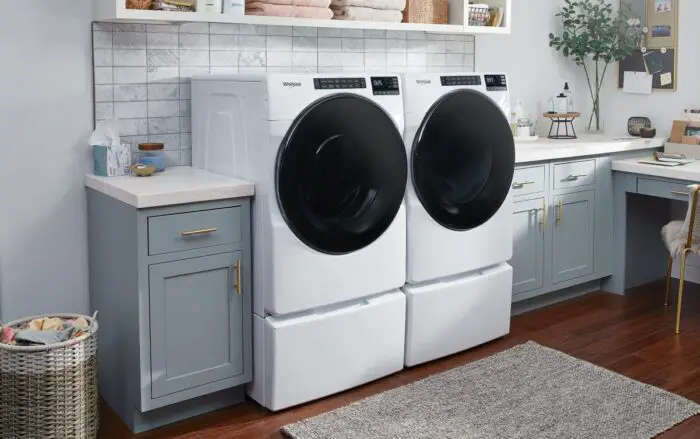
The coupler connects the motor to the transmission on the top-load washer. The coupler comprises three pieces. Usually, two are plastic, and one is a rubber part that works together. It makes the motor spin the transmission. One side of the coupler is mounted on the transmission, and the other is mounted on the motor. The rubber part goes in between to absorb shocks and vibrations.
How to Fix a Broken Coupler?
If the coupler has failed, you might hear the motor running, but the washer won’t agitate or spin. If the coupler is broken, you will hear a loud noise coming from the area where the coupler is located. The broken coupler pieces have to grind together, leaving bits of rubber or plastic on the ground underneath the washer. If that is the case, you will undoubtedly have to replace it.
4. Drive Motor Failure
A drive motor converts electrical energy into mechanical energy to drive the washer. There are different types of motors, but they all work the same. Some use a belt and pulley system, and others use a direct drive motor to drive the tub. If your washer won’t agitate, then it indicates that your motor has failed. On top-load washers, the motor is usually mounted towards the bottom of the machine. In contrast, the front-loader with a direct drive motor is on the back of the tub. The ones with belts are mounted on the bottom of the tub.
How to Fix Drive Motor Failure?
If you hear a humming noise when the motor tries to start, there is more likely a problem with the drive motor. First, you need to make sure that nothing is jamming up the motor, such as blockage in the drain pump or locked up the transmission. How are you going to fix the motor? It depends on the type of washer you have, as the motor is mounted differently in different washers.
- On Top-load washers, you may have to remove the belt or motor to turn the transmission to ensure it is not locked up. While you have the motor free, then check the motor to see if it is jammed or not. If you have the types of drain pumps that are mounted directly on the motor, you have to check them to see whether it is blocked.
- In Front-load washers with a belt, you can take off the belt to see the tub and motor spin. In direct drive front loaders, you have to turn the rotor to make sure it spins freely.
If the motor tub or pump is not physically jammed up, you will have to test the motor to see an electric problem. If there is an electric issue, you will have to get your tech sheet or wiring diagram to solve the problem. There are many different types of motors, so you can seek help from an expert or fix it yourself by following the steps mentioned in the troubleshooting.
5. A Faulty Timer
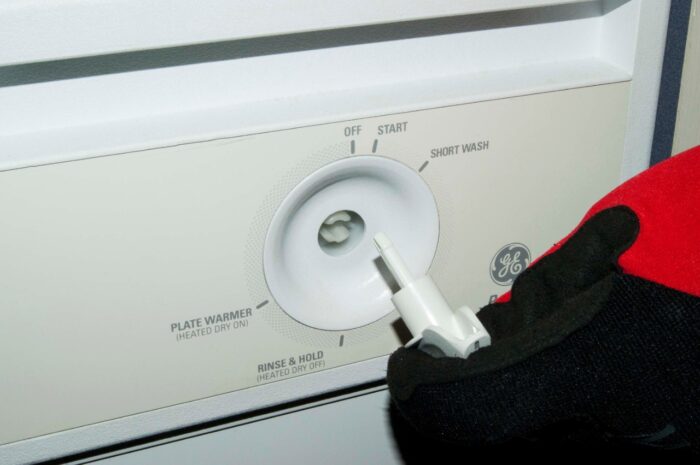
A faulty timer can also cause the washing machine not to agitate perfectly. There are different parts in a washing machine that works in an association. A timer controls the drive motor, and the drive motor controls the power supply given to the agitator. The timer makes sure that the drive motor works effectively, so if it works effectively, then there will be no problem in the agitation of clothes.
How to Fix a Faulty Timer?
The timer is a set of contacts driven by a timer motor. If the timer is not advancing, it means that the timer motor has failed, the gears are damaged, or the contacts inside are also failed. You can test the continuity of the timer by using the multimeter set. If you have a more advanced timer, you first need to identify the wire connected to the motor with the help of a wiring diagram. Afterward, you can check the terminals for continuity using a multimeter. If the continuity is terrible, then you need to replace the timer.
6. Damaged Drive Belt
A drive belt connects the motor pulley to the drive pulley, so the inner tub can agitate and spin. There are two different styles of drive belts. One is a beat belt, and the other is a multi-groove belt. No matter what type of belt you have, if the belt is broken, fallen off, or stretched to the point that it is slipping, then the washing machine will not agitate.
How to Fix a Damaged Drive Belt?
Well, drive belts are located at the back of the front-loaders, and in top-loaders, the drive belt is located at the bottom. So, first, you have to visually inspect the drive belt to see if it has just fallen off, then you can quickly put it back on and see if it works or not. But, if the drive belt is stretched or damaged, then you will have to replace it by buying a new drive belt for your washing machine.
7. Defected Door Latch Assembly
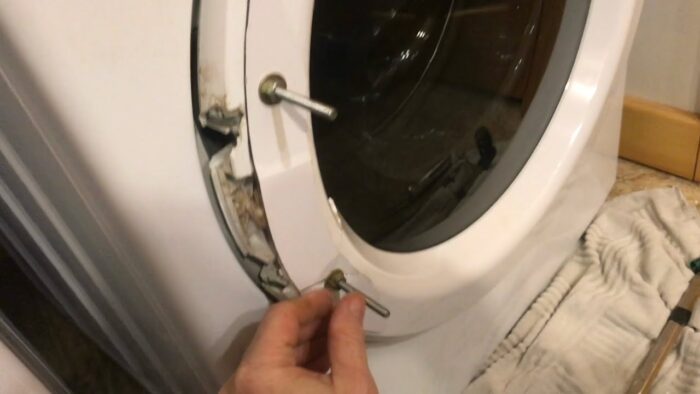
A door latch assembly is the safety device that tells the washing machine that its door is closed. It locks the door during the wash cycle. There are many different types of door latch assemblies. If it fails, the washer won’t get signals that the door is closed and locked from the latch. So you will think that the door is open. Depending upon your washer style, it may still fill the tub, but it will not agitate. If you have a washing machine with a diagnostic mode, then the washing machine will display an error after several tries. This error will indicate that the latch assembly has failed.
How to Fix the Door Latch Assembly?
In front-load washers, the assembly is located behind the front panel, and on the top loader, it is located on the top. Before you open up the machine, first, you should check the door strike to ensure that it is not damaged. If your washer is not agitating and gives you an error code, you will have to get the tech sheet. First, you will have to find your code and follow the troubleshooting steps. If there is no code and you still suspect that the latch assembly has failed, you will have to use the tech sheet or a wiring diagram. These can help you figure out how to check the door latch assembly for your specific model.
FAQ’s
How do I know if my agitator is broken?
The agitator is a pretty prominent structure in the center of the tub. So, whenever an agitator does not work, we can easily notice it by looking at it. If your washing machine’s door is see-through, then it will be a lot easier to see if it is working or not.
What is the most likely cause a washing machine will not agitate or spin?
There are two leading causes behind the washing machine that can lead to it not being able to agitate but spin. One reason is a broken or damaged agitator. It is the central part behind the agitation of clothes. It is the part that moves the clothes and makes the agitation process possible. The other main reason is a bad transmission. The transmission is attached to the motor and agitator. The motor makes the transmission spin, which makes the agitator spin. So, if it is not working, the agitator will also not work.
Can you use a washing machine without the agitator?
Yes, you can use the washing machine without the agitator. Most front-load washing machines and many top-load washers don’t have an agitator that reduces the cleaning performance but can give your clothes more life because they are gentle and do not exert much force on them.
Conclusion
At first, it might not seem like a big issue that your washing machine won’t agitate, but its impact on the cleaning performance of the washing machine is saddening. If your washing machine will not agitate but will spin and drain, then it will not remove the stains from your clothes. A washing machine is a complex machine with many different structures working together. So, there are many other parts, and any problems in these parts can lead to the washing machine not being able to agitate. I have explained all the causes and methods of fixing these problems. I hope that now you can fix your washer on your own, whenever it does not agitate.
Related Posts:
- Washing Machine Drainage Options and How to Run the…
- Maytag Centennial Washer Not Spinning or Draining -…
- Air Fryer Basket Peeling || Causes And Solution
- Keurig Says Add Water But It Is Full - What To Do? -…
- Instant Pot Timer Not Starting - Issue Fixed 2022 Guide
- Is A Popcorn Machine Worth It? - Features, Costs, Benefits
